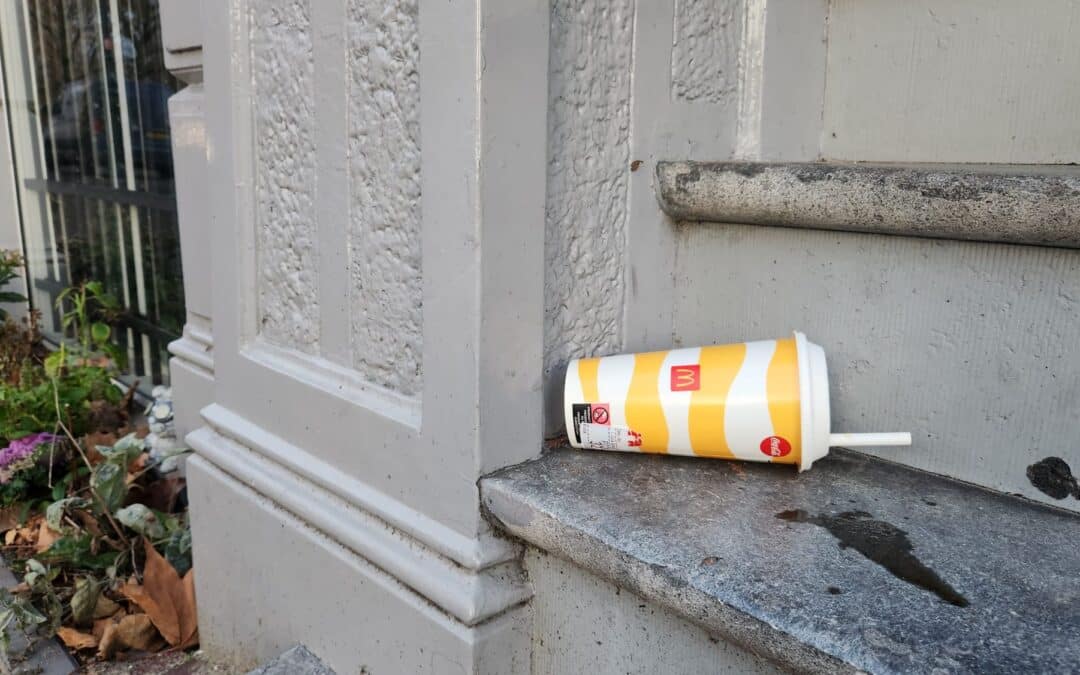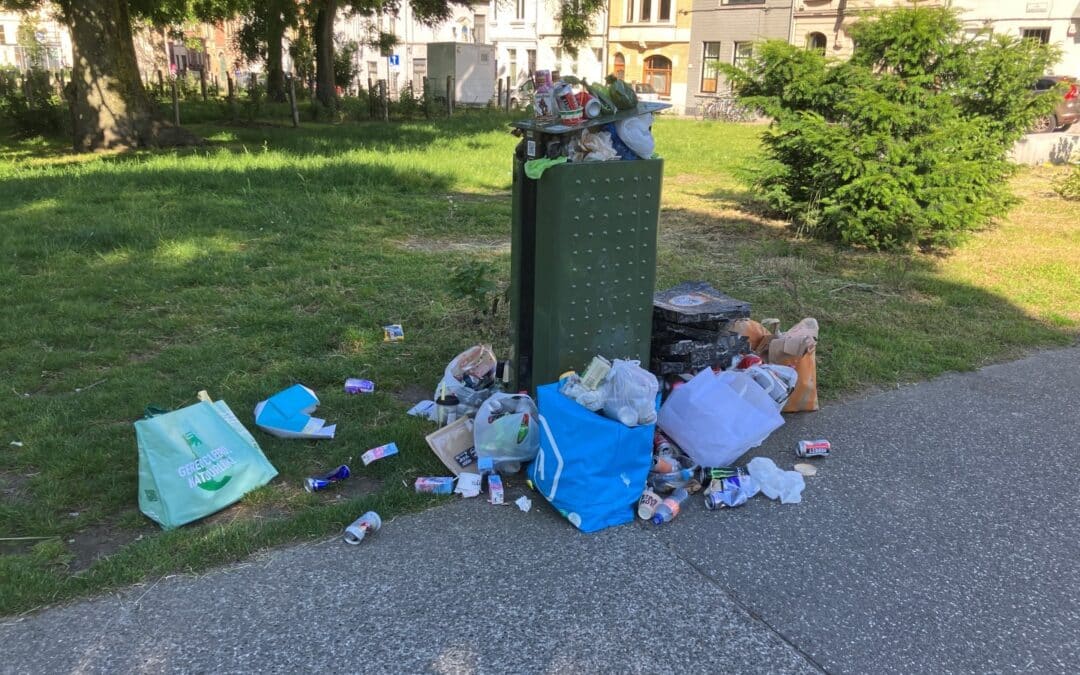Ahead of the introduction of mandatory Extended Producer Responsibility (EPR) for textiles across the EU, we are looking with great interest into the development of EPR for textiles in Belgium. Following France and the Netherlands, it is crucial that Belgium learns from existing EPR schemes to ensure that the new EPR for textiles supports and accelerates a true circular transition.
In order to do so, we call on Belgian decision makers, at the federal and regional levels, to include 5 key pillars into this new national EPR legislation:
Enforceable circular targets
EPR schemes do not reach their full potential to be circular economy enablers unless legally binding circular targets are mandated by legislators. This is already common practice in other EPR schemes[1]. Target must at least include separate collection, (local) reuse, recycling and fibre-to-fibre recycling and need to be set in a manner that rewards increasing ambition, with priority given to measures higher up the waste hierarchy. For example, hand-sorting for reuse may be more costly than sorting for recycling and downcycling (which may be more automated), and hence targets on reuse will ensure collected garments are only recycled if deemed unfit for reuse. Specific local reuse targets can further support social initiatives and create local jobs. Although repair should also be scaled up through the EPR for textiles, it is difficult to measure, and therefore we propose financing repair initiatives instead of placing targets (see below).
Targets should be set as a baseline, where going beyond that baseline is rewarded. Currently, most EPR schemes set targets in a way that discourages producers and PROs from continuing to finance activities once the targets are achieved – even when additional resources are available. Belgium has an opportunity to shift this dynamic, for example by setting targets relative to the share of waste that is not separately collected, or by introducing incentives that reward efforts beyond the baseline.
The ambition level of the targets will determine the extent to which the Belgian EPR scheme manages to be transformative instead of perpetuating the linear status quo.
Acknowledge the diversity of textiles
Current EPR legislation for textiles in the Netherlands and France primarily focuses on fashion, while textiles encompass a much larger variety of products. The variation in purpose, e.g. hotel and hospital linen, workwear and protective wear versus fashion, but also the difference in quality make that EPR-legislation cannot approach textiles as a homogeneous group. The first issue arises when producers are charged fees based on the kilograms of textiles placed on the market. This approach unintentionally rewards lightweight products, such as fast-fashion polyester shirts, while penalizing heavier, higher-quality items. Although eco-modulation can help address these imbalances, the Belgian EPR scheme should integrate such considerations from the outset[2].
Furthermore, in the example of the Dutch EPR legislation, although there is a reporting obligation for professional textiles, the targets do not distinguish between consumer and professional textiles. As a result, there is a mismatch between the legal targets and the capacity for certain producers of professional textiles to meet these targets. For example, professional textiles are often ill-suited for reuse due to the use of logos or safety regulations. At the same time, the fact that professional textiles are often more high-quality and durable, the potential for high-quality recycling might also be bigger. Belgian EPR legislation for textiles needs to ensure that targets match the reality on the ground by incorporating specific legislation for professional textiles alongside accompanying ones for consumer textiles.
Inclusive governance
Governance issues are currently obstructing the efforts of key stakeholders – such as social enterprises, municipalities, and recyclers – in delivering well-performing circular systems for textiles. At present, the boards of most PROs are predominantly composed of representatives from a limited number of large producers, which does not adequately incorporate the perspectives of other textile actors nor ensure sufficient accountability for the performance of the PROs. In addition to the existing minimum requirements set out in the Waste Framework Directive (WFD), we propose that Belgium mandates the inclusion of a broad group of stakeholders in the textile value chain in both national legislative processes (the design of EPR) and within the governance of the PROs themselves. There is no set model for inclusive governance, but it is crucial to not limit inclusive governance to including diverse stakeholders in advisory boards or consultation bodies. Inclusive governance here entails voting rights of a diverse group of stakeholders within the board of a PRO and within the design process.
This should include representation from waste handlers, retailers, consumer representatives, producers, and social actors, like HERW!N, Groep Maatwerk and RESSOURCES, who are a crucial part of the current system’s operations and its performance today. Social actors have ensured separate collection and reuse of textiles for decades. At the same time, they provide a large group of people with meaningful work. Such inclusive governance will help ensure that the textile system is aligned with market realities while fulfilling its circular and waste management objectives.
Progressive financing
In addition to introducing performance targets, it is important to make resources available to finance the unprofitable share of circular initiatives and to ensure that the EPR scheme does not merely finance the status-quo (collection and disposal). This could be done by mandating the PRO to earmark a specific percentage of their turnover to, for example, reuse-systems, high-quality recycling, repair and rental initiatives, and educational activities.
The height of the fees is also bound to the current cost coverage provision (via the EU WFD) – stipulating that a PRO cannot raise more fees than the costs of financing the system and reaching legislative obligations. Therefore, mandating PROs to channel a specific percentage of fees or turnover into a fund for circularity and innovation will help innovation and progress towards critical circular infrastructure and (societal) goals[3].
This would overcome the cost coverage provision due to the fact that it would already be earmarked for innovative solutions. We propose mandating that PROs, through the fund at least: a) invest in repair infrastructure, b) support and invest in market places for exchanging used textiles, c) communication- and education campaigns to raise awareness for sustainable consumption, d) support alternative means of production (such as on-demand, rental, and use of innovative materials and dyes). The fund should either be managed by the PRO itself when it is inclusively governed, or by a neutral body representing various circular economy actors.
Leave the option for multiple PROs
The question of multiple PROs should be addressed from the perspective of necessity. For Belgium to establish a well-functioning, ambitious, and transparent EPR-system, the requirements outlined above must be embedded in it. If these cannot be guaranteed under a monopoly PRO scheme, the option of introducing an additional PRO must remain open. As seen in the Netherlands, competition can challenge the status quo, drive ambition, and ensure that EPR continues to evolve. However, this is only effective if supported by robust legislation that prevents a race to the bottom – namely, by setting ambitious targets and securing sufficient and fairly distributed financial resources.
Footnotes
[1] – The Netherlands introduced a calculation of targets based on textiles put on the market;
– In France, the separate collection target is based on the average quantity (tonnes) of textiles put on the market in the last 3 years. The recycling target is based on quantities (tonnes) of textiles collected separately and sorted but not reused. The reuse target is in tonnes, while the local reuse target is based on the total quantity (tonnes) of reused textiles;
– In recent EU law, the regulation on batteries mandates the calculation of the first collection rate by using the amount of collected batteries in 2023, divided by the average of the sales of the three previous years (2020, 2021, 2022) (as indicated in Annex XI);↑
[2] A new policy proposal in The Netherlands suggests a levy through a digital product passport of about 1 euro per 0.1kg of fossil plastic textile.↑
[3] For example, a fund that allocates at least 10% of the EPR fees to reuse (5%) and repair operations (5%) in order to make this sector more profitable and create local jobs. Moreover, this measure is in line with the EP resolution on the EU Textile Strategy. Inspiration for the fund could be taken from the French example, which targets social economy actors directly. ↑
Related tags

Stichting OPEN misses opportunities to accelerate the circular transition in its application for a general binding declaration
This article analyzes the new AVV request by Stichting OPEN for e-waste, showing persistent failure to meet collection targets, producer-dominated governance, and minimal focus on reuse and lifetime extension in the 2025–2030 Action Plan. It also questions the AVV instrument’s effectiveness and the limited influence of stakeholders in the consultation process.

Customers pay the bill for McDonald’s pollution
For two years now, all hospitality establishments in the Netherlands have been required to serve food and drinks for on-site consumption in reusable packaging. However, since the summer of 2024, McDonald’s Netherlands has been violating the law by offering single-use cardboard cups with plastic coating in its restaurants. As a result, the country’s largest fast-food chain is not only non-compliant and wasting resources, but is even making customers pay extra by charging a fee for these single-use cups.

Belgian packaging industry already saved 465 million € in litter fees – at our expense
The Belgian packaging industry is outraged by the introduction of a new €102 million litter levy. But it conveniently forgets that its effective lobbying has already saved it no less than €465 million. This sum has been gained at the expense of local authorities and society. This levy is due to be approved today by the Walloon Council of Ministers. Fair Resource Foundation delves into the figures.

